2008 Turkish incursion into northern Iraq
| 2008 Turkish incursion into northern Iraq | |||||||
|---|---|---|---|---|---|---|---|
| Part of Turkey-PKK conflict, Iraq War | |||||||
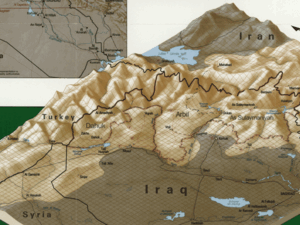 3D map of the North Iraq area |
|||||||
|
|||||||
| Belligerents | |||||||
| Commanders | |||||||
| Yaşar Büyükanıt İlker Başbuğ Aydoğan Babaoğlu Bekir Kalyoncu |
Murat Karayilan | ||||||
| Strength | |||||||
| 5,000-10,000 troops[1] | 4,000 (estimated) | ||||||
| Casualties and losses | |||||||
| 24 soldiers killed[2][3] 3 village guards killed[4][3] 1 AH-1 Cobra lost[5] |
Turkish claims: 324 killed in the ground offensive[6][7][8][9], 300[10] killed in air strikes prior to the ground offensive[7] 3 captured[11] [9] PKK claims: 9 killed[12] |
||||||
|
|||||
|
|||||
The 2008 Turkish incursion into northern Iraq, code-named Operation Sun (Turkish: Güneş Harekâtı) by the Turkish Armed Forces, began on February 21, 2008, when the Turkish Army sent troops into northern Iraq to target the Kurdistan Workers Party (PKK).[13] The ground offensive was preceded by Turkish Air Force aerial bombardments against PKK camps in northern Iraq, which began on December 16, 2007.[14][15] This constituted the "first confirmed ground incursion" of Iraq since the 2003 U.S.-led invasion.[16]
Initial reports indicated that up to 10,000 troops had taken part in the operation,[1] while later reports indicated just several hundred.[17]
Contents |
Background
In October 2007 Turkish jets and ground forces clashed with PKK forces in Turkey and over the border into northern Iraq.
Winter bombing campaign
Turkey launched its first cross-border raid on December 16 2007, involving 50 fighter jets.[18] A Turkish military statement said that up to 175 rebels were killed on that day alone, while Iraqi officials reported that the strikes had targeted 10 villages and killed one civilian. The PKK reported seven deaths.[19]
On December 18, the Turkish army reportedly penetrated several kilometers into Iraq to attack a group trying to infiltrate Turkey. It did not say how many troops were involved. Kurdish officials in Iraq said at least 300 Turkish troops had crossed the border for 15 hours.[19]
On December 22 and 23, Turkish fighter jets bombed areas in northern Iraq, damaging farmland. An Iraqi Kurdish official said there were no casualties in the air raid on December 23, which targeted a mountainous area north of Irbil and lasted for more than three hours.[18]
On December 26, the Turkish General Staff said Turkish military aircraft bombed eight PKK bases in northern Iraq in a raid undertaken after "it was determined that a large group of terrorists, who have been watched for a long time, were preparing to pass the winter in eight caves and hideouts in the Zap region," the statement said. A spokesman for Peshmerga security forces of Iraq's semi-autonomous Kurdish region said the strike lasted about an hour in a mountainous border region of Dahuk province, but inflicted no casualties.[20]
On January 15 2008, Turkish warplanes bombed Kurdish rebel hideouts in northern Iraq, the military announced, but there were no reports of casualties or serious damage.[21]
The Turkish military said in a statement on February 4 that Turkish fighter jets struck nearly 70 Kurdish separatist targets in northern Iraq in a series of strikes.[22]
The president of Kurdish region of northern Iraq, Massoud Barzani, condemned Turkey's raids and warned Ankara to stop the strikes,[7] and the Iraqi Foreign Minister Hoshyar Zebari, who is a member of the Kurdish Democratic Party (KDP), expressed concern that "unilateral actions" could harm Iraqi and Turkish interests.[19]
According to the Turkish General Staff, an estimated 300 PKK militants were killed by the aerial bombardments.[23]
Operation Sun
Preparation for the ground incursion
On February 21, Turkey began targeted artillery and aerial bombardment of the PKK positions in northern Iraq in order to "destroy the organizational infrastructure in the region." This lasted from 10:00 to 18:00 local time.[24] The Turkish government reported that on the day of the operation, Turkish President Abdullah Gül made a telephone call to Iraqi President Jalal Talabani, himself a Kurd, to brief him on the details of the incursion.[24] He also invited Talabani to come to Turkey.[25]
Turkish Prime Minister Recep Tayyip Erdogan said he called Iraqi Prime Minister Nouri al-Maliki on the night the ground operation began, and later U.S. President George W. Bush.[26] The United States was guarded in its response to the incursion, requesting that Turkey take care to only target the PKK, to "limit the scope and duration of their operations," and to work with Iraqi and Kurdish officials.[27][28]
Incursion


The incursion itself began at 17:00 UTC February 21, 2008. Reports from NTV Turkey indicated that 10,000 troops were involved in the operation, and had advanced 10 km beyond the Turkish border into Iraq,[29] [13] mainly around the Hakurk region. Another report from CNN-Turk said that 3000 special forces were involved.[24]
The incursion was announced on the Turkish General Staff's website the following day, and would constitute the "first confirmed ground incursion" since the 2003 invasion of Iraq.[16]
According to the Iraqi Foreign Minister, Turkish troops had advanced only 5 km into Iraqi territory.[30] 60 tanks were also said to have initially entered Iraq, but by the following day some had returned across the border.[31]
Kurdish-Iraqi peshmerga forces were put on alert and prevented Turkish military monitors in northern Iraq from leaving their camps.[32]
Iraqi officials announced that no Turkish troops had crossed the Iraqi border using the major land route into Iraq, the Khabur Bridge, and there were no reports of Turkish contact from the Kurdistan Regional Government Peshmerga forces.[33] Iraq claimed that Turkey had destroyed five bridges in the area.[31]
On February 24, PKK sources claimed a Turkish Cobra helicopter was shot down. Turkey confirmed this later in the day, saying that the incident happened "due to an unknown reason." Advancing Turkish troops were attacking the terrorists' shelters, logistic centers and ammunition. According to Turkey, the retreating PKK militants set booby traps under the corpses of dead comrades and planted mines on escape routes in order to gain time.[5]
By February 25, the military had advanced more than 12 miles into Iraq and claimed to have destroyed seven terrorist camps. Heavy fighting raged at the entrance to the Zap valley with most of the Turkish troops inside Iraq involved in an attack on a key PKK command centre in the valley after taking control of the PKK's Haftanin camp about 3 miles from the border.[34] Fighting was concentrated on a strategic hill which controls the entrance to the valley. At least 21 militants were killed in the battle for the hill according to the Turkish army. The PKK used long-range guns to hold off the military, killing two Turkish soldiers, until silenced with light and heavy weapons fire. PKK losses could not be determined because of bad weather.[35]
In the coming days Turkish warplanes bombed PKK hideouts in the mountainous Siladze area and heavy fighting raged in the area near the PKK camps in Zap and Haftanin, with the guerrillas putting up stiff resistance.[4] On February 27 Turkey sent additional troops to Iraq in the face of ongoing pressure from the international community for a speedy withdrawal.[36]
On February 28 a senior Turkish official said Turkish security forces were planning to pull back their troops in a few days to an uninhabited cordon sanitaire on the southern side of the border.[37] Pressure on Turkey to withdraw, however, continued to mount.[38]
The Turkish Army withdrew from Iraq on February 29, declaring that their goals had been achieved and the operation concluded,[39][40] [41] while also denying that the withdrawal had been prompted by pressure from the United States.[42]
Casualties and losses
According to the Turkish General Staff, a total of 272 aerial and 517 ground attack targets were hit during the operation;[10] while 126 caves, 290 shelters, 12 command posts, 11 communication posts, 6 training facilities, 23 logistical facilities, 18 transportation facilities, 40 light artillery guns and 59 anti-aircraft weapons of the PKK were destroyed or disabled.[10] Turkey claimed to have killed 237 PKK militants and captured 3 during the ground operation. On the Turkish side, 24 soldiers and 3 village guards were killed in combat.[10] Prior to the ground operation, Turkey estimated that an additional 300 PKK militants had been killed by Turkish air strikes which began on December 16 2007 and continued until the beginning of the ground offensive on February 21 2008.[10] The PKK has disputed Turkey's figures and claimed to have killed 127 Turkish soldiers while losing 9 of its fighters.[12] An independent confirmation of the toll in the remote area is virtually impossible.[43]
Ongoing operations
Turkey continued sporadic long-range attacks in the weeks following the operation. In the week of March 24, 2008, Turkey's military announced that it had killed at least 15 rebels in northern Iraq after firing on them with long-range weapons. A spokesman for the Iraqi Kurdish Regional Security Forces, however, denied the report, saying Turkey has not conducted any military operation or air assault there in the previous two weeks.[44]
On April 25 and 26, 2008, the Turkish Air Force bombed the PKK bases in the northern Iraqi regions of Zap, Avasin-Basyan and Hakurk.[45] This was described as the largest attack since the end of Operation Sun.[46] First the T-155 Fırtına howitzers (which have a range between 30 and 56 km, depending on the type of ammunition) were used to shell the PKK positions starting from 18:00 pm on April 25, which lasted for two hours.[46] Then F-16 jets equipped with LANTIRN belonging to the 181st Squadron (Pars Filo) and F-4E 2020 Terminator jets belonging to the 171st Squadron (Korsan Filo) began bombing the PKK's positions in northern Iraq, which lasted 45 minutes.[46] In the meantime, Heron MALE UAVs were used for gaining reconnaissance data regarding the PKK's positions, and about 1000 Turkish commandos entered 8 kilometers into northern Iraq from the border area near Derecik (Şemdinli) in pursuit of the PKK militants.[46] On April 26 2008, at around 06:00 am, a second aerial strike by the jets of the Turkish Air Force from Diyarbakır Air Base took place, in which the PKK militants using the cemetery area in Hakurk as a hideout were bombed.[46] This was followed by another air strike at 10:00 am in the same morning, during which the Turkish Air Force jets entered 30 kilometers into Iraqi air space.[46]
On May 1 2008, at least 30 jets of the Turkish Air Force bombed the PKK camps in northern Iraq.[47] The operation began just before midnight and continued into Friday, May 2 2008.[47] According to Turkish military sources, the PKK targets that were bombed are far from civilian settlements, at the mountains of the Qandil (Kandil) area.[47] On May 3, the Turkish General Staff announced that "more than 150 PKK terrorists have been neutralized in the latest operation, which targeted the camps in the Qandil Mountains, where most of the high-ranking members of the organization are located."[48][49] The Turkish General Staff, without giving a precise name, implied that the PKK rebels who were neutralized may also include "a terrorist who leads the organization" as well;[49] leading the Turkish press to speculate that Murat Karayilan might have also been killed during the latest aerial strikes.[50][51]
Reaction
Kurdish reaction
The Kurdistan Regional Government condemned the Turkish operation and called for an immediate withdrawal of troops. The KRG suggested immediate four-way talks between Turkey, the U.S., the Iraqi government, and the regional government in Northern Iraq.[52] President of the regional government, Massoud Barzani, though stating the Kurdish government is not part of the Turkish-PKK conflict warned Turkey about inflicting civilian casualties saying, "if the Turkish military targets any Kurdish civilian citizens or any civilian structures then we will order a large-scale resistance", and, "if the clashes harmed any of the Kurdish citizens or further reached Kurdish inhabited areas, Kurds are instructed and prepared to counter attack".[53][54] On February 28 the Kurdish prime minister said that the Turkish offensive may be aimed at the Kurdistan region of Iraq, and not strictly the PKK.[55]
International organizations
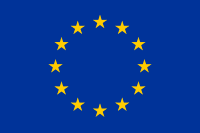 European Union – Foreign policy advisor Javier Solana spoke at a news conference in Slovenia, saying, "We understand the concerns of Turkey...but we think this action is not the best response. The territorial integrity of Iraq is for us very important."[56] The European Commission said through a spokeswoman that "The European Union understands Turkey's need to protect its population from terrorism and it also says that Turkey should refrain from taking any disproportionate military action and respect human rights and the rule of law."[24]
European Union – Foreign policy advisor Javier Solana spoke at a news conference in Slovenia, saying, "We understand the concerns of Turkey...but we think this action is not the best response. The territorial integrity of Iraq is for us very important."[56] The European Commission said through a spokeswoman that "The European Union understands Turkey's need to protect its population from terrorism and it also says that Turkey should refrain from taking any disproportionate military action and respect human rights and the rule of law."[24] United Nations – Secretary General Ban Ki-moon released a statement asking for "utmost restraint" and respect of international borders on the part of Turkey and the immediate end of "incursions by PKK elements" into Turkey.[57]
United Nations – Secretary General Ban Ki-moon released a statement asking for "utmost restraint" and respect of international borders on the part of Turkey and the immediate end of "incursions by PKK elements" into Turkey.[57]
National governments
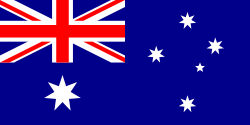 Australia – Foreign Affairs Minister Stephen Smith called on Turkey to respect Iraq's sovereignty and withdraw as soon as possible.[4]
Australia – Foreign Affairs Minister Stephen Smith called on Turkey to respect Iraq's sovereignty and withdraw as soon as possible.[4] Germany – The Foreign Office urged Turkey not to escalate regional tensions.[29]
Germany – The Foreign Office urged Turkey not to escalate regional tensions.[29]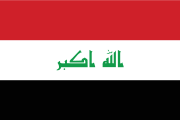 Iraq – The Iraqi government protested to the Turkish chargé d'affaires in Baghdad. An Iraqi government spokesman said, "Our position is Turkey should respect the sovereignty of Iraq and avoid any military action which would threaten security and stability."[30] On February 26 Iraq increased its criticism, saying the "unilateral military action was unacceptable and it threatened the good relations between the two neighbouring countries."[58]
Iraq – The Iraqi government protested to the Turkish chargé d'affaires in Baghdad. An Iraqi government spokesman said, "Our position is Turkey should respect the sovereignty of Iraq and avoid any military action which would threaten security and stability."[30] On February 26 Iraq increased its criticism, saying the "unilateral military action was unacceptable and it threatened the good relations between the two neighbouring countries."[58]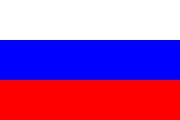 Russia - The Russian Foreign Ministry expressed the hope that a political solution respecting Iraqi sovereignty and regional security could be found, though it also acknowledged the importance of not allowing "the territory of any state to be used as a staging ground for terrorist activities against their neighbours."[29]
Russia - The Russian Foreign Ministry expressed the hope that a political solution respecting Iraqi sovereignty and regional security could be found, though it also acknowledged the importance of not allowing "the territory of any state to be used as a staging ground for terrorist activities against their neighbours."[29]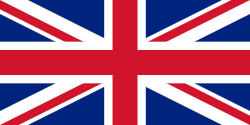 United Kingdom – The Foreign Office stated, "We would urge Turkey to withdraw from Iraqi territory as early as possible and take the greatest possible care to avoid causing harm to the civilian population."[59] On February 23 Turkish Foreign Minister Ali Babacan called British Foreign Minister David Miliband to update him on the operation's progress and exchange views.[60]
United Kingdom – The Foreign Office stated, "We would urge Turkey to withdraw from Iraqi territory as early as possible and take the greatest possible care to avoid causing harm to the civilian population."[59] On February 23 Turkish Foreign Minister Ali Babacan called British Foreign Minister David Miliband to update him on the operation's progress and exchange views.[60]
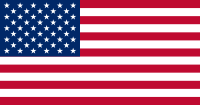 United States – In the months leading up to the incursion the US had repeatedly expressed concerns that large-scale military action in Northern Iraq had the potential to destabilize the region, although it supported Turkey's right to defend itself against insurgents[61][62]. It was seen as a "bitter defeat for American diplomacy" when Turkey launched the operation in defiance of this lobbying effort[63], and although the US publicly expressed its belief that Turkey had the right to defend itself against insurgents[64] they maintained consistent pressure on Turkey to limit the length and scale of the operation throughout[65][40]. On February 24, for example, U.S. Defense Secretary Robert Gates said "I would hope that it would be short, that it would be precise and avoid the loss of innocent life and that they leave as quickly as they can accomplish the mission."[60]
United States – In the months leading up to the incursion the US had repeatedly expressed concerns that large-scale military action in Northern Iraq had the potential to destabilize the region, although it supported Turkey's right to defend itself against insurgents[61][62]. It was seen as a "bitter defeat for American diplomacy" when Turkey launched the operation in defiance of this lobbying effort[63], and although the US publicly expressed its belief that Turkey had the right to defend itself against insurgents[64] they maintained consistent pressure on Turkey to limit the length and scale of the operation throughout[65][40]. On February 24, for example, U.S. Defense Secretary Robert Gates said "I would hope that it would be short, that it would be precise and avoid the loss of innocent life and that they leave as quickly as they can accomplish the mission."[60]
See also
|
|
References
- ↑ 1.0 1.1 Bendern, Paul de (2008-02-22). "Turkey launches major land offensive into N.Iraq", Reuters. Retrieved on 2008-02-22.
- ↑ "US to seek end to Turkey assault", BBC News Online, 27 February 2008
- ↑ 3.0 3.1 Hürriyet: Örgütün kalpgahı imha edildi (2008-02-29)
- ↑ 4.0 4.1 4.2 "Turkey steps up Iraq onslaught as US urges quick pull-out", The Sydney Morning Herald, February 28, 2008
- ↑ 5.0 5.1 "Turkey admits loss of helicopter", BBC News Online, 24 February 2008
- ↑ FT.com / Home UK / UK - Turkish assault on Kurdish militants in Iraq takes heavy toll
- ↑ 7.0 7.1 7.2 "Turkey Iraq raids 'killed hundreds'", BBC (2007-12-25). Retrieved on 2008-02-22.
- ↑ http://www.washingtonpost.com/wp-dyn/content/article/2008/02/24/AR2008022400325.html
- ↑ 9.0 9.1 Hürriyet: Örgütün kalpgahı imha edildi (2008-02-29)
- ↑ 10.0 10.1 10.2 10.3 10.4 Turkish General Staff: Final Report regarding Operation Sun
- ↑ "BASIN AÇIKLAMASI 28 Şubat 2008" (2008). Retrieved on 2008-02-28.
- ↑ 12.0 12.1 France 24 | PKK threatens to retaliate against Turkey | France 24
- ↑ 13.0 13.1 Bendern, Paul de (2008-02-22). "Turkey army launches land offensive into Iraq", Reuters. Retrieved on 2008-02-22.
- ↑ Flight Global: Turkish air force in major attack on Kurdish camps
- ↑ "Turkish jets bomb Kurdish rebel hideouts in northern Iraq", Jerusalem Post (2008-01-15). Retrieved on 2008-02-22.
- ↑ 16.0 16.1 Tavernise, Sabrina; Arsu, Sebnem (2008-02-22). "Turkey Says It Has Sent Ground Troops Into Iraq", The New York Times. Retrieved on 2008-02-22.
- ↑ Muir, Jim (2008-02-22). "Turkey border tensions fuel confusion", BBC News. Retrieved on 2008-02-22.
- ↑ 18.0 18.1 "Turkey continues raids into Iraq", BBC (2007-12-23). Retrieved on 2008-02-22.
- ↑ 19.0 19.1 19.2 "Turkey defends incursions in Iraq", BBC (2007-12-19). Retrieved on 2008-02-22.
- ↑ "Turkey Targets Northern Iraq Again", Al Jazeera (2007-12-26). Retrieved on 2008-02-22.
- ↑ "Turkish jets bomb Kurdish rebel hideouts in northern Iraq", Ynet (2008-01-15). Retrieved on 2008-02-22.
- ↑ "Turkey Targets 'PKK bases in Iraq'", Al Jazeera (2008-02-04). Retrieved on 2008-02-22.
- ↑ Turkish General Staff: Final report regarding the operation
- ↑ 24.0 24.1 24.2 24.3 "HIGHLIGHTS - Turkey launches ground operation vs PKK in the Northern Iraq (updated at GMT 1202)", Hurriyet (2008-02-22). Retrieved on 2008-02-22.
- ↑ "Turkish president invites Iraqi counterpart to visit Turkey", Xinhua News Agency (2008-02-22). Retrieved on 2008-02-23.
- ↑ Hacaoglu, Selcan; Torchia, Christopher (2008-02-22). "Turkish Troops Enter Iraq Seeking Rebels", Associated Press. Retrieved on 2008-02-22.
- ↑ "Turkey Told US, Iraq of Incursion Plan", Associated Press (2008-02-22). Retrieved on 2008-02-22.
- ↑ "U.S. urges Turkey to end incursion in Iraq", MSNBC News Services (2008-02-22). Retrieved on 2008-03-26.
- ↑ 29.0 29.1 29.2 Bentley, Mark (2008-02-22). "Turkish Army Begins Ground Assault on PKK in Iraq (Update9)", Bloomberg.
- ↑ 30.0 30.1 Karouny, Mariam (2008-02-22). "Iraq protests Turkish incursion into Northern Iraq", Reuters. Retrieved on 2008-02-22.
- ↑ 31.0 31.1 Susman, Tina; Comert, Yesim (2008-02-22). "Turkish troops invade Iraq in pursuit of rebel Kurds", Houston Chronicle. Retrieved on 2008-02-23.
- ↑ Torchia, Christopher (2008-02-22). "Turkey Launches Ground Operation in Iraq", Baltimore Sun. Retrieved on 2008-02-22.
- ↑ "Turkish troops enter north Iraq", BBC News (2008-02-22). Retrieved on 2008-02-22.
- ↑ "Iraq condemns Turkish incursion", Reuters via Yahoo News (2008-02-26). Retrieved on 2008-02-27.
- ↑ "Iraq denounces Turkish offensive", BBCNews (2008-02-26). Retrieved on 2008-02-27.
- ↑ "Turkey sends more troops into Iraq", Cable News Network (2008-02-27). Retrieved on 2008-03-26.
- ↑ "Turkey to pull out of Iraq in days as US calls for swift end to conflict", The Guardian (2008-02-28). Retrieved on 2008-02-28.
- ↑ Sevastopulo, Demetri; Boland, Vincent and Dombey, Daniel (2008-02-28). "US raises pressure on Turks over incursion", The Financial Times Ltd.. Retrieved on 2008-03-26.
- ↑ "Turkish Troops Withdraw From Iraq", Associated Press (hosted by google), Feb 29, 2008
- ↑ 40.0 40.1 "Turkey Leaves Iraq After U.S. Pressure", CBS Interactive Inc. (2008-02-29). Retrieved on 2008-03-26.
- ↑ Hürriyet: Örgütün kalpgahı imha edildi (2008-02-29)
- ↑ "Turkey denies US pressure influenced withdrawal", Australian Broadcasting Corporation (2008-03-01). Retrieved on 2008-03-26.
- ↑ "Turkey urges PKK to end struggle", BBC News Online, 1 March 2008
- ↑ Turkey: 'Kurdish rebels killed in northern Iraq', CNN, March 29, 2008.
- ↑ BBC: Turkey launches raids on Northern Iraq. April 27, 2008.
- ↑ 46.0 46.1 46.2 46.3 46.4 46.5 Hürriyet: Hem karadan hem havadan. April 27, 2008.
- ↑ 47.0 47.1 47.2 Reuters: Turkish jets bomb PKK camps in Northern Iraq. May 1, 2008.
- ↑ BBC: Turkey 'kills 150 Kurdish rebels'
- ↑ 49.0 49.1 Turkish General Staff: BİLGİ NOTLARI. TARİH: 03 Mayıs 2008. NO: BN - 33 / 08.
- ↑ Hürriyet: Ankara'da Karayılan öldürüldü iddiası. May 3, 2008.
- ↑ Hürriyet: 150'den fazla terörist öldürüldü. May 3, 2008.
- ↑ "Iraqi Kurds condemn Turkey incursion, call for troops withdrawal", Xinhua (2008-02-23). Retrieved on 2008-02-23.
- ↑ "Barzani warns of large scale resistance", Press TV (2008-02-23). Retrieved on 2008-02-23.
- ↑ "Barzani says Kurds will fight back against Turkish troops", The Earth Times (2008-02-23). Retrieved on 2008-02-23.
- ↑ Aqrawi, Shamal (2008-02-28). "INTERVIEW-Turkey targets Iraq Kurds, not just rebels-Kurd PM", Reuters. Retrieved on 2008-02-28.
- ↑ "EU's Solana: Turkey incursion "not best response"", Reuters (2008-02-22). Retrieved on 2008-02-22.
- ↑ "Secretary-General concerned by latest escalation of tension along Turkish-iraqi border". Department of Public Information of the United Nations (2008-02-22). Retrieved on 2008-02-22.
- ↑ "Iraq says Turkey incursion 'unacceptable'", AFP (2008-02-26). Retrieved on 2008-02-28.
- ↑ "UK urges Turkey to leave Iraq as early as possible", Reuters (2008-02-22). Retrieved on 2008-02-22.
- ↑ 60.0 60.1 "Tens of PKK terrorists killed, Turkey continues diplomatic initiatives (UPDATED)", Hurriyet (2008-02-24). Retrieved on 2008-02-24.
- ↑ Goktas, Hidir; Jones, Gareth (2007), "Turkey approves Iraq incursion plan, allies anxious", Reuters, 2007-10-17, http://www.reuters.com/article/topNews/idUSL1354608620071017, retrieved on 2008-07-10
- ↑ Buckley, Cara; Tavernise, Sabrina (2007), "Rice Visits Iraq Amid Strain With Turkey", New York Times, 2007-12-19, http://www.reuters.com/article/topNews/idUSL1354608620071017, retrieved on 2008-07-10
- ↑ "What Is Behind Turkey's Invasion of Northern Iraq?", Spiegel Online International, 2008, 2008-02-25, http://www.spiegel.de/international/world/0,1518,537554,00.html, retrieved on 2008-07-10 (Archived by WebCite)
- ↑ Gűtaṣli, Selçuk (2008-02-23). "US seemingly approves ground operation", Today's Zaman. Retrieved on 2008-02-23.
- ↑ Iraq incursion finished, Turkey says, CNN, 2008 (published 2008-02-29), http://www.cnn.com/2008/WORLD/meast/02/29/iraq.main/index.html, retrieved on 2008-07-10
External links
- Turkish General Staff official website.
- Turkey targets Iraq Kurds, not just rebels: Kurd PM.
- Map of the air strikes.
|
|||||||||||||||||||||||||||||||||||